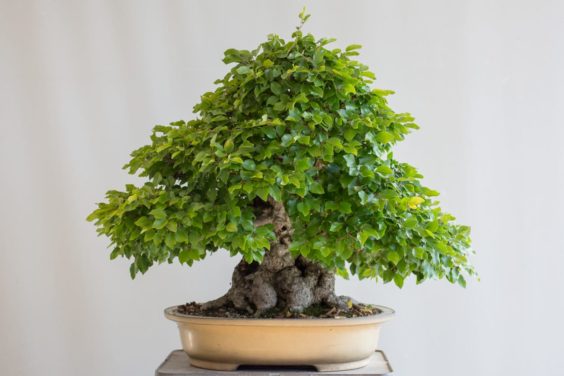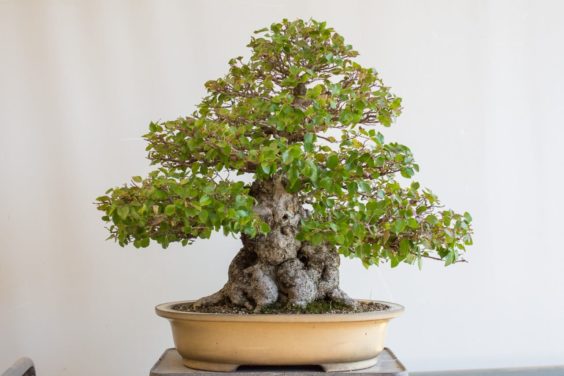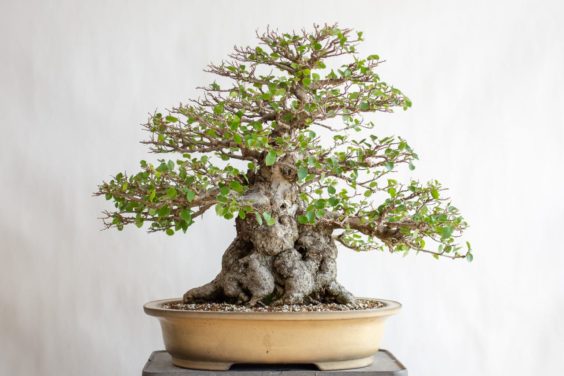After an experiment with full defoliation on a Korean hornbeam – see the process (here) and the results (here) for details – I’ve made it an annual practice to partially defoliate refined specimens.
The question I’ve been asking in recent years is, how many leaves should I remove?
Last year I took a fairly conservative approach. Here’s the tree before and after partial defoliation.
Korean hornbeam – May 2017
After removing about half of the foliage
I’d hesitated to remove more leaves as the tree was recovering from losing all of its foliage early the previous fall. (I had removed the leaves ahead of an exhibit).
I found that a number of small interior branches died back last year, likely due to a lack of light during the growing season.
Not wanting to repeat the mistake, I removed far more foliage this year, including all large leaves, downward-growing leaves, and leaves at the outside of the silhouette.
After partial defoliation – May 2018
Because the remaining leaves have been in the shade up until this point, I placed the tree in a shady spot until the tender leaves get used to the increased light.
When it’s time for cutback in fall, I’ll see if there is more or less dieback than the previous year and adjust my plan for next year’s defoliation accordingly.
Subscribe to Bonsai Tonight
New Posts Delivered Every Tuesday and Friday



Jef Porto-Carrero says
Hi Jonas. Would you recomend this for a Korean Hornbeam that’s still in development?
Jonas Dupuich says
Hi Jef – If you’re still growing the trunk, I’d hold off on defoliation as it will slow down development. Defoliation techniques will help after the trunk and primary branches are in place.
Ann says
Jonas – would you recommend this practice with maples? Especially trident maples?
Jonas Dupuich says
Hi Ann – healthy trident maples in the refinement stage can be fully defoliated between one and three times a year. Japanese maples can be partially or fully defoliated once a year, depending on the goals of the defoliation.
Alex V says
Jonas –
Thank you for the great description. This seems like a technique broadly applicable to many deciduous species once the trunk is set and branch development is the goal. Do you do this for other species in your garden? What about flowering trees like crabapple? How about fertilization to encourage a strong response from inner buds? This topic was timely, keep up the great blog!
Alex V
Jonas Dupuich says
Great question Alex (and great to hear from you!). I haven’t grown as many flowering and fruiting varieties so I’m not as familiar with how they’d respond to defoliation. Trees that respond well include elms/zelkova, trident and Japanese maples (though not less-vigorous cultivars) and hornbeam. Chojubai respond well too. Will have to test out other fruiting and flowering trees.
As for fertilizing, trees that are defoliated need to be fertilized ahead of the defoliation so they can push out new foliage.